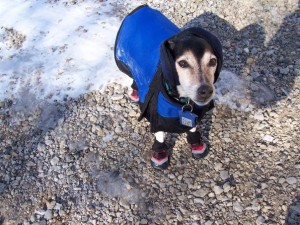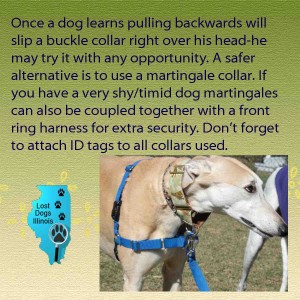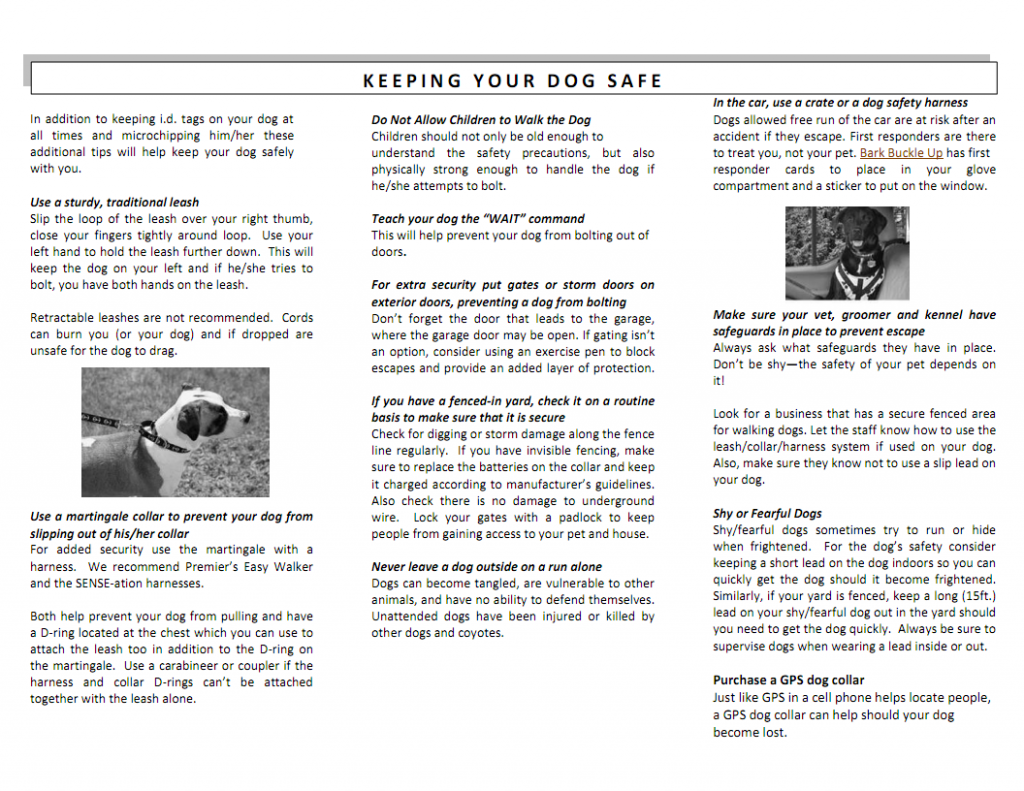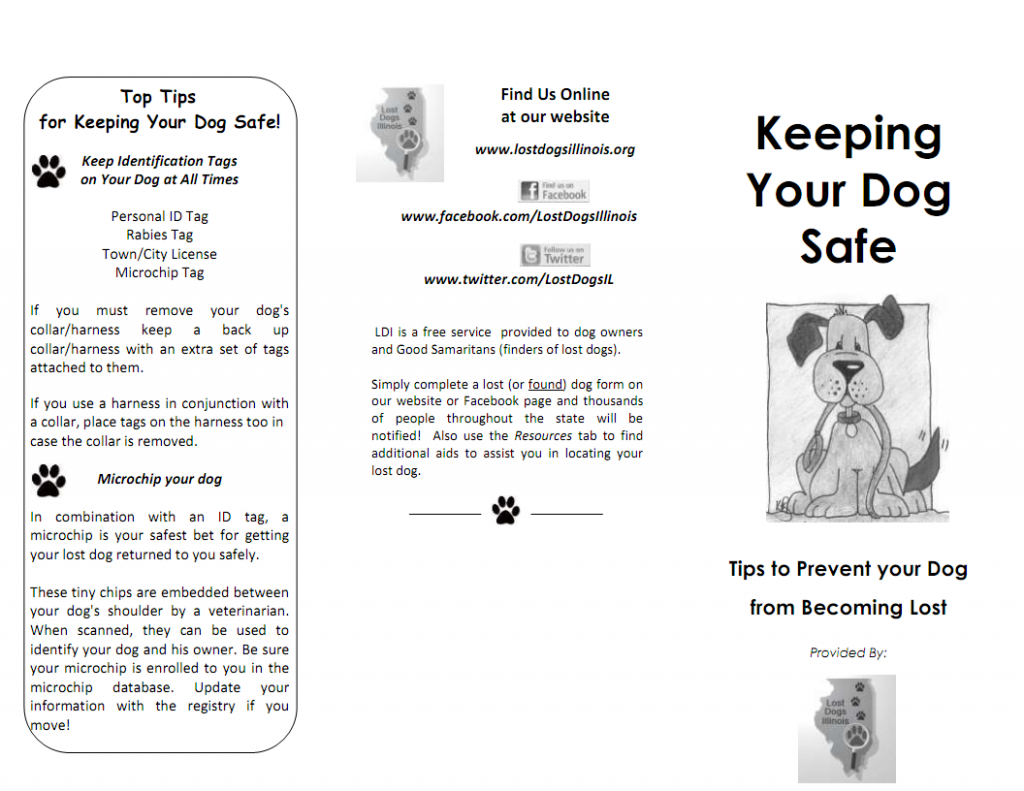Baby, it’s Cold Outside – Keep Your Dog Safe
With the weather becoming blustery, dog owners might consider the following safety tips:
- Keep ID tags on your dog at all times along with a properly fitted collar – personal ID tag, Rabies/license tag, and microchip tag. If your dog gets lost, you want the person who finds your dog to be able to easily contact or find you.
- Make sure your dog is microchipped and the chip is registered to you. A microchip is a tiny chip implanted between your dog’s shoulder blades; it can be scanned and used to identify your dog. Don’t forget to update your contact information with the microchip registry if you move. (If you adopted your dog from an animal shelter, he/she may be already microchipped. Check your adoption records or ask your veterinarian to scan your dog for a microchip.)
- Use a sturdy, traditional leash; slip the loop of the leash over your right thumb and close your fingers tightly around the loop. Use left hand to hold the leash further down. if she/he tries to bolt, you have both hands on the leash.
- When children are walking the dog, they should not only be old enough to understand the safety precautions, but also physically strong enough to handle the dog if he/she attempts to bolt.
- If you let your dog out into a fenced yard, check the fence on a routine basis to make sure it is secure. Winds and snow can damage your fence.
- Be extra cautious with shy/timid dogs. When walking them, make sure they have a properly fitted martingale collar along with a harness; either hook the harness and collar together with one leash or leash separately. Both collar and harness should have ID tags.
Bundle up and enjoy!





